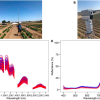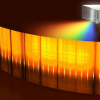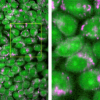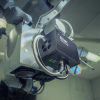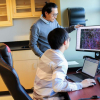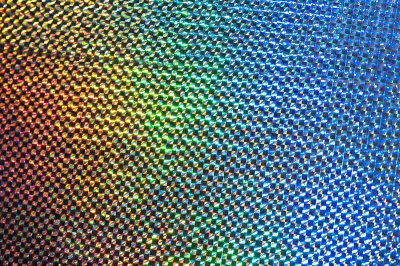
The threat of infectious diseases and antimicrobial resistance is just one case to illustrate that now is the time to commit to strong investment in photonics. Investment in photonics is more crucial now than ever. Fast, clean and precise, photonics can build advanced diagnostics, pervasive monitoring and innovative e-health applications that can detect body signals, symptoms and diseases at very early stages.
COVID-19 has shown us that we, as a species in many regions of the world have been unprepared for a dangerous pandemic. Nations all over the world have lacked the necessary capacities to test for infectious diseases, meaning responses have been delayed and adequate measures not taken at appropriate times. It is in this critical time period, the testing and initial response, that determines our ability to control or respond adequately to a threat. And it is in this crucial phase where photonics can provide unique solutions like no other technology owing to its speed and the rapid time it can deliver information.
Photonics can deliver instantaneous information about the health status of a patient to determine whether they are suffering from a condition that is caused by a virus or a bacterium. Indeed, one of the unique selling points of light technologies is that results can be determined on-site, in situ without having to send samples to a laboratory and await analysis.
Infectious diseases can have a number of causes, including bacteria, viruses, fungi or even parasites, and can be transmitted from person to person, or animal to person. There are many infectious diseases that pose a danger to our species, such as Influenza, AIDS/HIV, Malaria, Tuberculosis, SARS, Ebola or Zika. This serious threat requires drastic, urgent solutions and has been highlighted by COVID-19 this year.
With the global pandemic of 2020 caused by SARS-CoV-2, COVID-19 will be added to the three infectious diseases that account for the Top Ten Leading Causes of Death worldwide, including Lower Respiratory Infections, Diarrheal diseases and Tuberculosis. Even before COVID-19, according to the World Health Organisation, the situation was worse in low-income countries in 2018, with five infectious diseases—Lower respiratory infections, Diarrheal diseases, HIV/AIDS, Malaria, Tuberculosis—being a leading cause of death among the top ten.
Declared by the World Health Organisation as one of the top 10 global public health threats facing humanity, Antimicrobial Resistance (AMR) poses a serious threat to humanity. Antimicrobials, which include antibiotics, antivirals, antifungals and antiparasitics, are medicines used to prevent and treat infections and infectious diseases. AMR occurs when bacteria, viruses, fungi and parasites change over time and no longer respond to medicines making infections harder to treat and increasing the risk of disease spread, severe illness and death. Currently, the WHO estimates 10 million people could die from antimicrobial-resistant (AMR) infections globally by 2050 if the prescription or treatment situation does not change fundamentally.
To tackle future pandemics, medical and health practitioners will need to be equipped with next-generation specialist tools that provide instantaneous diagnostic information that is inexpensive and easy to deploy and should operate at a point of care to the patient.
At the time of writing, in Europe, the Photonics Public Private Partnership is funding many research projects to develop tools and techniques for infection diagnostics. The CoNVat consortium, for example, is developing an ultrasensitive laser sensor that detects coronavirus at the earliest point of infection from a saliva or nasal swab in minutes. Originally developed to look for bacterial infections or cancer biomarkers, the new ultrasensitive detector uses photonics to detect infections in patients with a small amount of the virus and will diagnose in real-time with high specificity from a low concentration sample.
Projects using spectroscopy and imaging to advance fast diagnosis of infection and sepsis
A powerful method for diagnosis of infection and sepsis has been researched within the EU-funded project “HemoSpec”. From a small amount of blood from the patient, the photonic-based algorithm can differentiate patients with sterile inflammation, infection and sepsis with high accuracy. The algorithm is based on valuable information of the leukocyte’s activation state that can be extracted in a non-destructive and label-free manner using Raman spectroscopy. The technology is currently in translation together with the industry.
In order to provide the basis for a future decentralised application of biophotonic technologies such as Raman spectroscopy as a novel diagnostic tool in hospitals and doctor's offices, the EU COST action “Raman4Clinics” brought spectroscopists, clinicians and device manufacturer from all over Europe together to perform a large-scale, cross-laboratory study. This study assessed the comparability of Raman spectroscopic configurations of 35 Raman spectroscopic devices with different configurations in 15 institutes within seven European countries. Statistical data analysis played an important role in achieving comparability.
The EU is currently funding the Innovative Training Network (ITN) “IMAGE-IN: Imaging Infections” within the Marie Skłodowska-Curie Actions (MSCA) to educate the next generation of scientists who can actively advance imaging technology for medical application, in particular, develop a new photonics-based method for fast diagnosis of difficult-to-treat infections but also for non-invasive treatment monitoring.
In further national funded projects, spectroscopists advance in close collaboration with physicians and live science researchers optical-spectroscopic methods for fast antibiotic susceptibility testing (AST). The aim is to reveal the infection-causing bacterial pathogen and its antibiogram within 3 h directly from a minimal amount of the patient’s sample. Ideally, the patient sample is easily accessible, such as a patient’s urine or blood.
The joint research project ReHwIN focusses on nosocomial urinary tract infections that account for up to 30 % of all nosocomial infections in Germany. The final photonic analysis system will combine microfluidic processing of a urine sample with a miniaturised and sensitive Raman spectroscopic readout platform and data analysis with artificial intelligence. The project InfectoXplore tackles bloodstream infections which are associated with high morbidity and mortality rates and require rapid therapy; otherwise, they can lead to sepsis. Within InfectoXplore, positive blood cultures will be analysed and a targeted and personalized photonics-based diagnostic algorithm will be developed that enables a tailored antibiotic therapy as quickly as possible.
While Europe has a wealth of researchers working on cutting edge photonics techniques, we cannot simply rest on our laurels. We need to ensure we are prepared against the next pandemic with a collective commitment to fund photonics.
Photonics is a global industry predicted to be worth a staggering €696 ($829) billion by 2025. In parts of the world, photonics is recognised as having enormous potential and leverage. The China Central government increased its investment in photonics every year by 40 %, to reach €1 billion in 2020 while the South Korea government spending in photonics increased to €2.8 billion per year. The EU only commits €100 million to photonics every year—a tenth of the China equivalent.
Just recently, three of the world’s most eminent scientists criticised the European Commission’s intention to drastically cut photonics funding over the next seven years. In an open letter to the European Commission, the Nobel laureates criticised the decision to make a 30 % reduction in funding support by the European Commission for a future Photonics Partnership 2021–2027 in Horizon Europe.
In short, photonics is a key enabler for a wealth of next-generation technological developments, as well as for humanity to mount an adequate response to future pandemics and health crises. Rather than stall, policymakers should recognise the threat pandemics (which are caused by infectious diseases) are capable of and how adequate photonics funding can see us prepared for a future outbreak.





